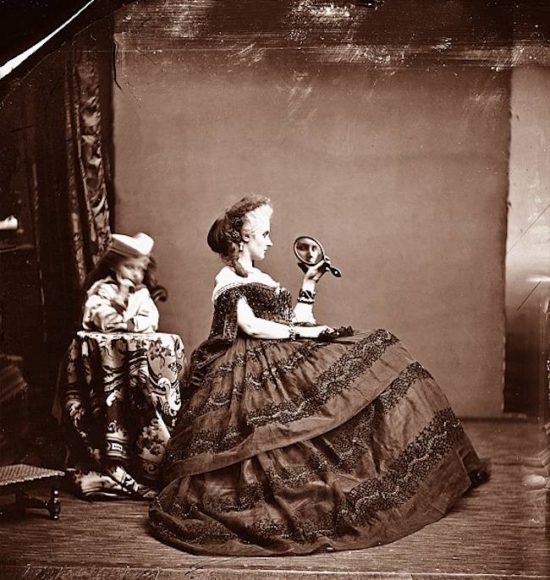The 19th-Century Countess Who Became Her Own Muse
The 19th-Century selfie queen. We’d like to read a book about this woman…
From Broadly,
The Scandalous, Narcissistic 19th-Century Countess Who Became Her Own Muse
The Countess of Castiglione was obsessed with her own beauty, and meticulously art directed hundreds of portraits of herself over the course of her life. Though many dismissed her as self-absorbed, her body of work prefigured our contemporary fascination with questions of narcissism and self-documentation.
“Picture it: a woman sitting with her face in perfect profile, skin bright against the background. Her dress is huge—voluminous skirts trimmed with thick bands of lace. She has bracelets on each wrist and hair partially pinned up, one ringlet trailing down her neck. Behind her sits a child, his face blurred and ghostly mid-motion. But the most intriguing aspect of the image is one of its smallest components: the small hand-mirror this woman wields. It’s oval-shaped, holding a partial reflection of her face—eyes, nose, the top of her lips. In this fragment of a reflection, her gaze is steady, staring right down the camera lens.
In fact, you may not need to picture it; you may have already seen the image. It’s the sort of thing that pops up regularly all over the internet, unmoored from context or time period. It holds just the right amount of intrigue with its arrangement of material and mirrors, as well as its ambiguous message: Vanity? Self-knowledge? Artifice? Voyeurism? Playfulness? Or something else entirely?
Writing about herself in third person, the Countess said, “The Eternal Father did not know what he was creating the day he sent her into the world; he modeled and modeled, and when he was finished he looked at his wondrous work and was overwhelmed. He left her in a corner without assigning her a place…”
Click here for the rest, and some incredible photographs.
Share

